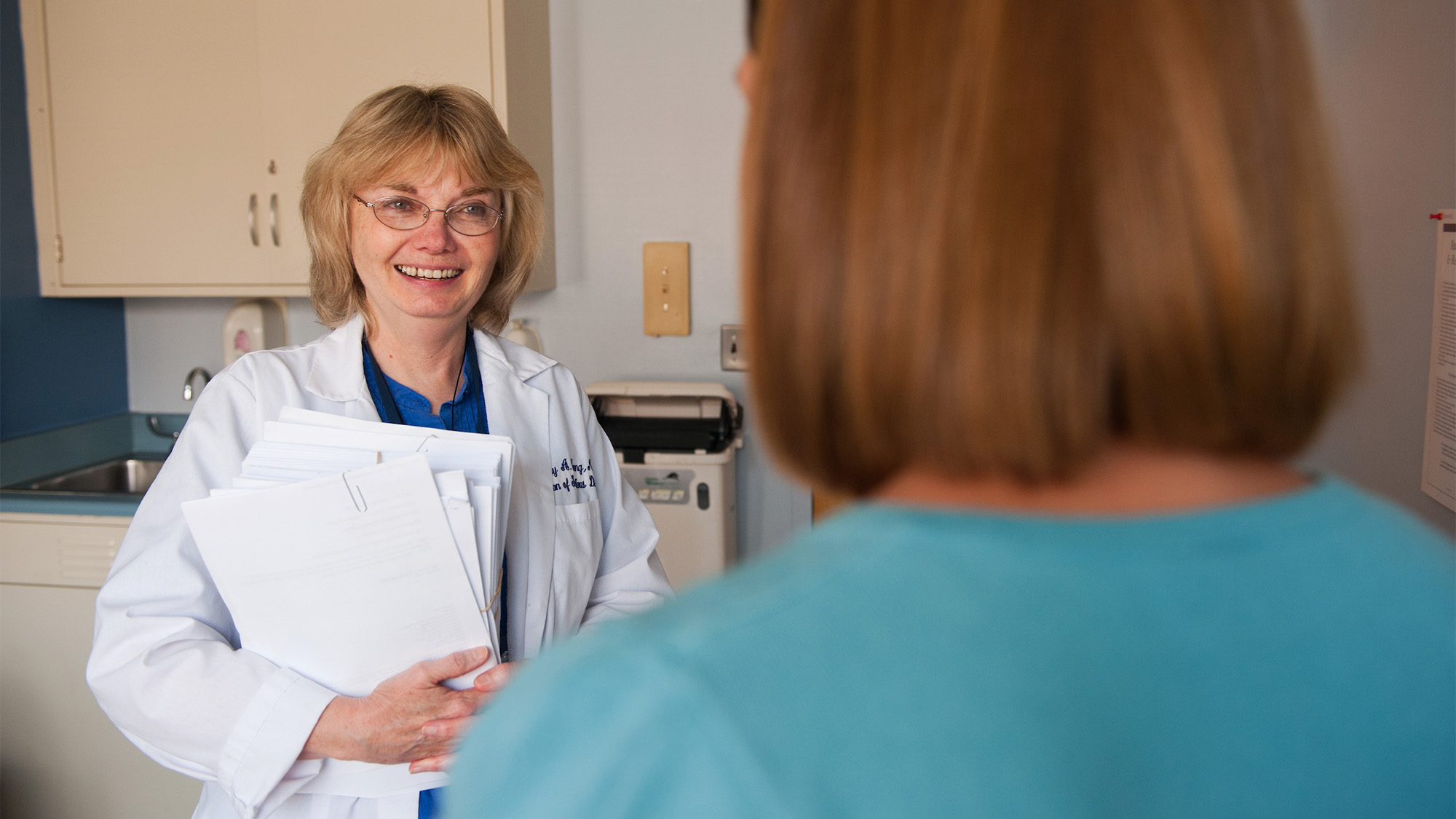Inspired by the Women She Has Studied for Decades

Posted in GUMC Stories
July 27, 2016 — Mary Young, MD, wasn’t a traditional physician when she joined the Georgetown University faculty in 1989 after an internship in infectious medicine at its hospital.
Now, newly retired, she reflects upon the experiences that brought her to medical school and how they shaped the physician-researcher she came to be — one who has had the longest running National Institutes of Health grant — 23 years — in Georgetown University Medical Center’s history.
When she entered medical school at West Virginia University in 1980, she was “older,” 29, and a woman — two factors that were less common for a medical student.
Before that, Young had been a high school English teacher in Baltimore County for several years. But it was a volunteer experience she had after graduating from college that cemented her future in medicine.
A Clinic for Women
While teaching high school, Young worked in a clinic, the People’s Free Medical Clinic, in an underserved neighborhood in Baltimore. Everyone, including physicians, volunteered their services, and Young worked as a patient advocate. She would sit with patients waiting to be seen, help them formulate their medical history, work with them on the issues they should discuss with their doctor, and then she would sit in on the exam.
“It was an amazing experience — it was very formative because it was really how I envisioned interacting with patients,” she says.
Her decision to go to medical school and into infectious disease paralleled the emergence of HIV and AIDs. The first thing she did at Georgetown was establish a weekly clinic for the women who were being diagnosed with the disease.
“A lot of what I learned working at the free medical clinic in Baltimore I brought to how I constructed the clinic that we developed for women with HIV at Georgetown,” she says.
And the reason she wanted to concentrate on women diagnosed with HIV is because “the way in which women were being affected was different from men. Women would often feel that their family responsibilities should override their own medical care.
Her ‘Baby’ is 22
And then Young birthed what she has long called “her baby” — the Washington DC Metropolitan Women’s Interagency HIV Study (WIHS).
The NIH had long been studying HIV in men, but WIHS was designed to focus on HIV+ women and those at risk of infection. When the NIH established WIHS and accepted applications in 1992, Young wrote one for the DC-Maryland-Virginia area collaborating with 5 other metropolitan institutions. She received the grant — one of five in the nation.
Young and her colleagues in the greater DC area then enrolled 400 women over the following year, mostly African-American, into the study. Until her full retirement in May, Young followed the participants for 22 years, and managed the 20 Georgetown researchers and physicians who collaborated with her. Investigators involved nationally in WHIS have authored more than 650 publications.
Look at the Total Person
At the same time, Young directed the clinical core of the DC D-CFAR (the District of Columbia Center for AIDS Research), among other responsibilities.
But it is her WIHS participants that Young keeps close to her heart.
“I have incredible respect and admiration for these women,” Young says. “They have just got a great ability to move forward with their lives in the face of incredible difficulty.
“I must say I think everybody in WIHS feels like we have gotten as much from them in terms of just understanding about how to face life’s difficulties,” she says.
She has similar words of gratitude for her WIHS colleagues who often combine research with medicine.
The WIHS grant continues under the leadership of Georgetown’s Seble Kassaye, MD. Just this summer, Kassaye and her colleagues published a new report on the high transmission of HIV drug resistance in the Washington, DC area.
Proud of the legacy she’s left, Young describes Kassaye’s work as a “major accomplishment” that will help inform prevention efforts.
“It is so wonderful to be able to take care of patients but also have the opportunity through research to understand more about what and why we are doing what we do,” says Young.
Postscript: Young died at her home on Feb. 25, 2024. The Georgetown infectious disease department shared the news with their colleagues writing: “Dr. Young was a pillar of strength, and maintained amazing clarity and laser focus on what matters the most. Dr. Young was much loved by her patients, participants, the community of advocates who she worked with tirelessly in the early days of the pandemic, students, colleagues, fellow faculty members, and the many early-stage investigators whose careers she selflessly helped boost. We will remember and honor her for her kind and gentle ways, her love for family and friends, her commitment to remaining centered through meditation and mindfulness, her celebrations of her faiths, her humility and understanding of human frailties, unconditional support, and for being the consummate practitioner of rendering care with loving kindness.”
